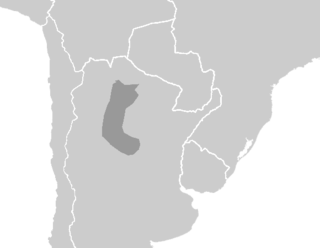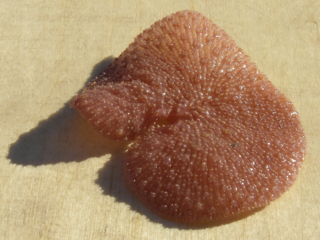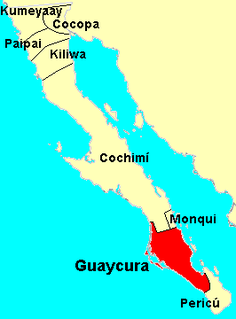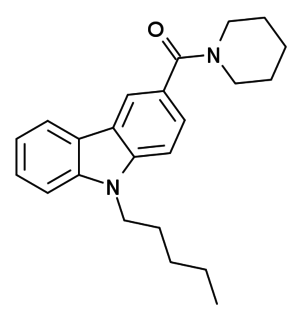
Lule is an indigenous language of northern Argentina.
The Piaroa–Saliban, also known as Saliban (Salivan), are a small proposed language family of the middle Orinoco Basin, which forms an independent island within an area of Venezuela and Colombia dominated by peoples of Carib and Arawakan affiliation.
Vilela is an extinct language last spoken in the Resistencia area of Argentina and in the eastern Chaco near the Paraguayan border. Dialects were Ocol, Chinipi, Sinipi; only Ocol survives. The people call themselves Waqha-umbaβelte 'Waqha speakers'.
Maipure, was a language once spoken along the Ventuari, Sipapo, and Autana rivers of Amazonas and, as a lingua franca, in the Upper Orinoco region. It became extinct around the end of the eighteenth century. Zamponi provided a grammatical sketch of the language and furnished a classified word list, based on all of its extant eighteenth century material. It is historically important in that it formed the cornerstone of the recognition of the Maipurean (Arawakan) language family.

The two Lule–Vilela languages constitute a small, distantly related language family of northern Argentina. Kaufman found the relationship likely and with general agreement among the major classifiers of South American languages. Viegas Barros published additional evidence from 1996–2006. However, Zamponi (2008) considers Lule and Vilela each as language isolates, with similarities being due to contact.

Renilla is a genus of sea pen. It is the only genus within the monotypic family Renillidae.
A superglass is a phase of matter which is characterized by superfluidity and a frozen amorphous structure.
Supercapitalism was a concept introduced by Benito Mussolini in a speech given in November 1933 to the National Council of Corporations of the Kingdom of Italy. Mussolini gave this speech in the context of the ongoing Great Depression, and he attempted to explain the economic crisis in the world at the time by arguing that capitalism had gradually degenerated from its original form: first there had been dynamic or heroic capitalism (1830–1870), followed by static capitalism (1870–1914), in turn followed by the final form of decadent capitalism, known also as supercapitalism, which began in 1914. Mussolini claimed that at the stage of supercapitalism "a capitalist enterprise, when difficulties arise, throws itself like a dead weight into the state's arms. It is then that state intervention begins and becomes more necessary. It is then that those who once ignored the state now seek it out anxiously".
Heroic capitalism or dynamic capitalism was a concept proposed by Benito Mussolini in a speech given in November 1933 to the National Council of Corporations of the Kingdom of Italy. The speech was given in the context of the ongoing Great Depression, and Mussolini attempted to explain the economic crisis in the world at the time by arguing that capitalism had gradually degenerated from its origins: first there had been dynamic or heroic capitalism (1830–1870), followed by static capitalism (1870–1914), in turn followed by the final form of decadent capitalism, known also as supercapitalism, which began in 1914.
Betoi (Betoy) or Betoi-Jirara is an extinct language of Colombia and Venezuela, south of the Apure River near the modern border with Colombia. The names Betoi and Jirara are those of two of its peoples/dialects; the language proper has no known name. At contact, Betoi was a local lingua franca spoken between the Uribante and Sarare rivers and along the Arauca. Enough was recorded for a brief grammatical monograph to be written.

Waikuri is an extinct language of southern Baja California spoken by the Waikuri or Guaycura people. The Jesuit priest Baegert documented words, sentences and texts in the language between 1751 and 1768.
Giuseppe Zamponi also Gioseffo Zamponi was an Italian composer best remembered for his opera Ulisse all'isola di Circe performed in Brussels in 1650, which was the first opera performed in the low countries, at the time part of the Spanish ruled Southern Netherlands.

NMP-7 is a drug which acts as both a non-selective agonist of the CB1 and CB2 cannabinoid receptors, and also as a blocker of T-type calcium channels, the target of anticonvulsant drugs such as ethosuximide. NMP-7 has an agonist EC50 of 96.9nM at CB1 and 10.5nM at CB2, and an IC50 of 1.84μM for blocking Cav3.2 T-type calcium channels. In animal studies it produces potent analgesic effects in a variety of different tests.

Pericú is the extinct and essentially unattested language of the Pericú people who lived at the southern tip of Baja California Sur. Jesuit missionaries recognized it as distinct from Waikuri (Guaycura) immediately to the north. It was spoken in the mountainous area around the mission of San José del Cabo, on the southeastern coast from Santiago to La Paz, and on the islands off the east coast as far north as Isla San José.

MEPIRAPIM is an indole-based cannabinoid which differs from JWH-018 by having a 4-methylpiperazine group in place of the naphthyl group and has been used as an active ingredient in synthetic cannabis products. It was first identified in Japan in 2013, alongside FUBIMINA. MEPIRAPIM acts as a T-type calcium channel inhibitor and is only minimally active at the central CB1 receptor.
Gerald W. Zamponi is a Canadian physiologist and pharmacologist, currently a Canada Research Chair in Molecular Neuroscience at University of Calgary.
Rubén Osvaldo Zamponi is an Argentine professional footballer who plays as a centre-back for UAI Urquiza.
Duho is a proposed language family of South America, uniting two proposed genetic groupings, Hodi–Saliban and Ticuna–Yuri. This language stock was proposed by Marcelo Jolkesky (2016), based on his previous but now disclaimed Macro-Daha stock which had also included the Andoque–Urequena languages.
Marco Zandron is an Italian-Spanish figure skater who currently represents Spain. With his skating partner, Laura Barquero, he is the 2021 CS Nebelhorn Trophy silver medalist, and the 2021 Spanish national champion.







